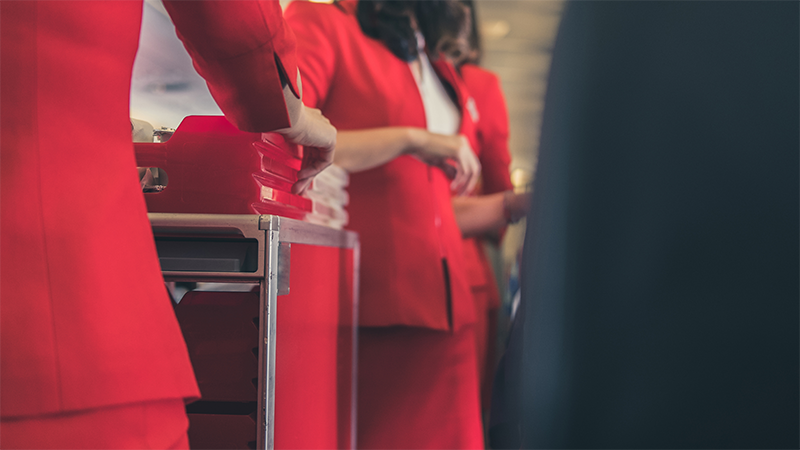Why is weighing so important for airline catering?

Keeping airline weight as low as possible is imperative for airlines to help reduce costs. One area weight is essential is in catering processes, where menu items need to meet specific weight criteria.
Weight is one of the three most important issues, after aerodynamics and engine performance, affecting the efficiency of an aircraft - according to the Financial Times.
Less fuel used means significant savings on operating costs for the airline.
Why is weighing important for airlines?
Weight is an essential factor to consider for airlines. An overweight aircraft is at increased risk of crashing, such was the case when actress and singer, Aaliyah Houghton, died in a plane crash in 2001.
Phil Derner, a former aircraft loadmaster, said “There are many examples of a plane crashes that were caused due to overweight, or poorly balanced aircraft.” Seth Kaplan of Airline Magazine added: “Commercial airlines actually pay a lot of attention to weight and always have.”
Investigations into airlines have taken place for a violation of weight and balance guidelines, and flying too heavy. Further, due to the fine margins involved in airline weight, airlines have been known to take customers from certain flights and place them on others in order to keep weight down.
Where can airlines save weight and costs?
A reduction in weight can directly correlate to a reduction in costs - and savings in weight of passengers, luggage, fuel and even catering can all contribute to reduced fuel, CO2 and money savings.
According the International Air Transport Association’s analysis into cutting catering costs, “Each year airlines spend about 2-3 of total expenditure on catering. Less catering means less weight and hence better fuel consumption. Turnaround times also benefit.”
New, lightweight catering trolleys could improve the airlines financial position. “These have really shed the pounds, going down to 10kg from almost 60kg before. Considering a fully loaded Boeing 747 would hold around 100 trolleys, that is a significant saving in weight, fuel and CO2. Replacing real dishware and cutlery has also be encouraged, replacing it with prepackaged dining which can ‘simply be thrown away’.
Benoit Pilon, Manager, Airport and Inflight Services for IATA, says: “Importantly, prepackaged meals are significantly lighter, again meaning fuel and CO2 savings.”
Which weighing scales should airline caterers use?
For a comprehensive assessment of weight being carried by the aircraft, it is recommended that the trolley and items being carried are weighed.
Drive Thru scale with I-400 indicator: As loading groups are responsible for gathering prepared items and checking the quantity and quality, they are ideally placed to weigh catering trolleys before they are loaded onto the aircraft. The trolley can be wheeled onto a drive thru scale via the built-in ramps.
Alternatively, for weighing crates a weigh beam scale can be used. These beams can be positioned to weigh crates of any size. This scale has a fitted printer allowing you to keep a paper record of the crate weight.
Alternatively, for weighing ingredients and prepackaged items in a kitchen prior to boarding, consider the following option:
Marsden B-100: A fully waterproof IP68 rated scale which can withstand spillages, choose the B-100. Our best-selling bench scale has a choice of capacities and graduations, to 0.2g.
If you need help with choosing the right scales for your airline catering needs, speak to the Marsden team on 01709 364296.